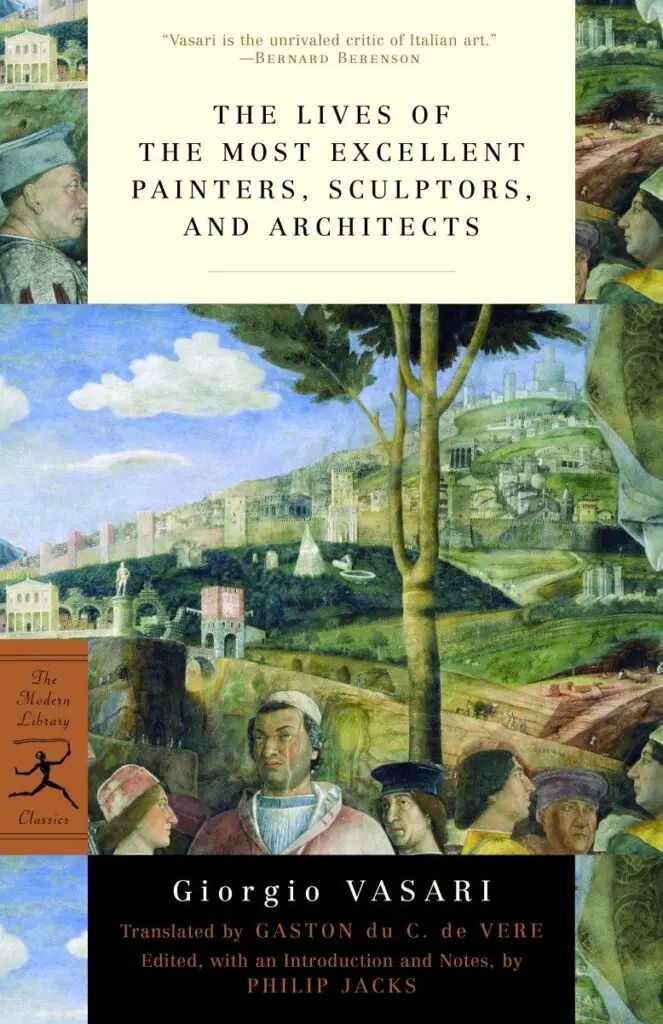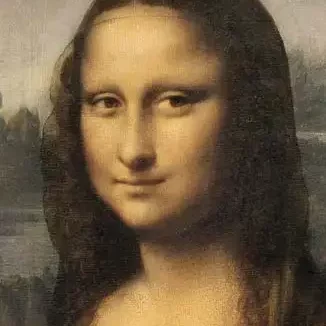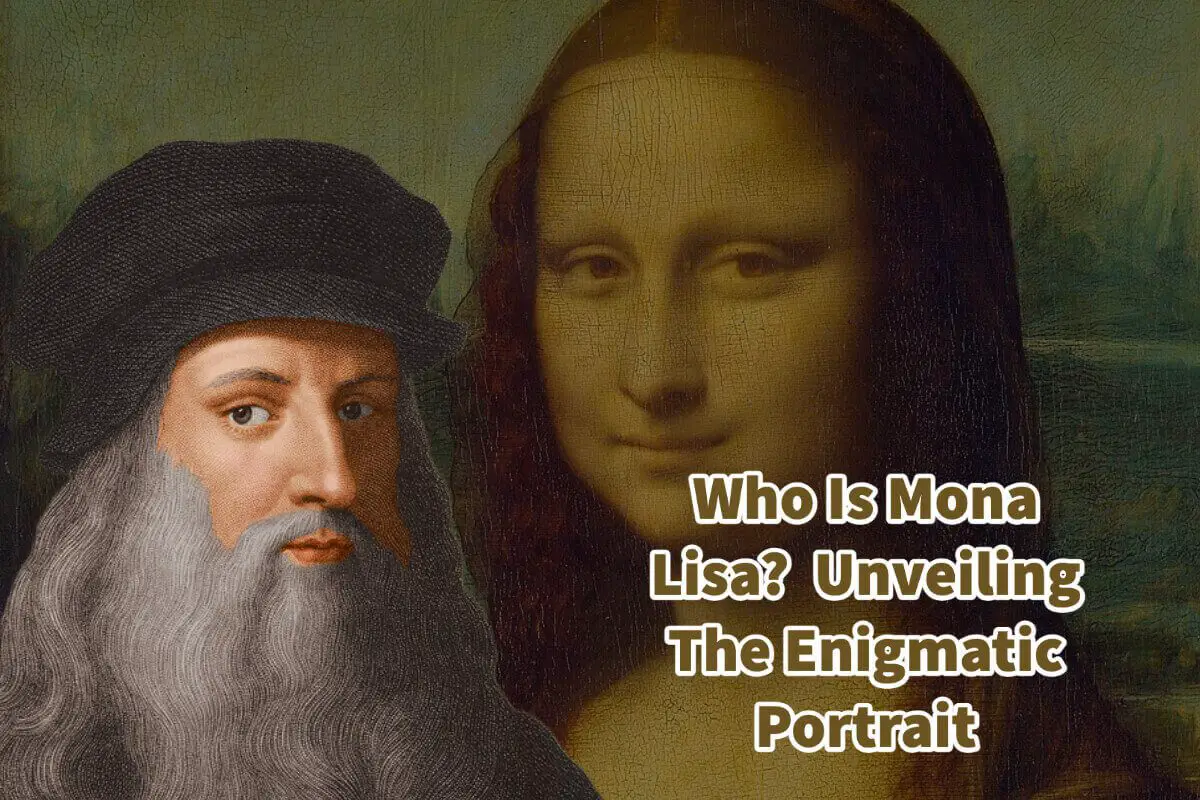The Mona Lisa painting is one of the world’s most famous and important pieces of artwork; it continues to captivate audiences with her enigmatic smile and captivating gaze. But who is the woman behind this iconic masterpiece?
Many believe that the Mona Lisa is the portrait of Madam Lisa Giocondo. While the woman’s true identity in the painting has remained a subject of debate and speculation, it is widely believed that Mona Lisa is a portrait of Madam Lisa Giocondo. This theory is based on the mid-sixteenth-century biography of Leonardo da Vinci by Giorgio Vasari, historical records, and circumstantial evidence.
Table of Contents
- The Biography Of Leonardo da Vinci By Giorgio Vasari And Mona Lisa
- Who Is Madam Lisa Giocondo, The Probable Subject Of The Mona Lisa?
- Theories Behind The Mona Lisa Smile
- Mystery Surrounding The Mona Lisa Painting
- Frequently Asked Questions
- Related Questions
The Biography Of Leonardo da Vinci By Giorgio Vasari And Mona Lisa
To understand the connection between Madam Lisa Giocondo and the Mona Lisa, we must delve into the mid-sixteenth-century biography of Leonardo da Vinci by Giorgio Vasari. Vasari’s book is titled “The Lives of the Most Excellent Painters, Sculptors, and Architects.” I have a copy of this book as it provides valuable insights into the life and works of Renaissance artists, including Leonardo da Vinci.

Vasari mentions Leonardo’s admiration for portraiture and meticulous attention to detail in the biography. He describes a portrait of a Florentine woman, the wife of a wealthy Florentine named Francesco del Giocondo, commissioned by Leonardo. The description in this book forms the basis for the belief that the Mona Lisa is the portrait of Francesco del Giocondo’s wife Madam Lisa Giocondo.
Who Is Madam Lisa Giocondo, The Probable Subject Of The Mona Lisa?
Madam Lisa Giocondo, Lisa Gherardini, was born in Florence in 1479. She was the second wife of Francesco del Giocondo, a prosperous silk merchant. While there is no concrete evidence linking her definitively to the famous Mona Lisa painting, historical records, and circumstantial evidence have contributed her this widely accepted theory.
During the Renaissance, it was common for wealthy patrons to commission portraits of their loved ones. Francesco del Giocondo, a prominent member of Florentine society, may have sought to immortalize his wife through the artistry of Leonardo da Vinci.
The Mona Lisa’s portrayal of a prosperous and fashionable Florentine woman aligns with the social status of Madam Lisa Gherardini, making her a plausible candidate as the sitter for the Mona Lisa painting.
Furthermore, it is believed that Leonardo da Vinci worked on the portrait for an extended period, possibly over many years. This prolonged engagement may indicate a personal connection between the artist and the subject.
The Giocondo family was known to have maintained friendly relations with Leonardo, adding weight to the theory that Madam Lisa Gherardini may have been the subject of this famous painting.
There is no evidence in any of Leonardo’s notebooks of payuemtn for the paintings, so we do not know if he decided for some reason to not give to to them and bring it with him. Because there is no real written record on the Mona Lisa painting, this just adds to the paintings mystery.
About Francesco del Giocondo, The Silk Merchant And The Mona Lisa
Francesco del Giocondo, a prosperous silk merchant, has become a possible patron of the iconic Mona Lisa painting. Born in Florence during the 15th century, Giocondo enjoyed a position of wealth and influence in society.

From what we kmow about Francesco del Giocondo is that he was a self-made man and was quite wealthy. We also know that he was involved in the political and civic life in Florence, Italy.
It is believed that Francesco del Giocondo commissioned the renowned artist Leonardo da Vinci to paint a portrait of his second wife, Lisa Gherardini. This theory suggests that the painting’s name, “Mona Lisa,” derives from a contraction of “Monna Lisa,” meaning “Lady Lisa” in Italian, or Madam Lisa.
We do know that Madam Lisa Gherardini was from the Gherardini family who were prominent landowners in the Florence, Italy area. She would have also come from a family that had social standing in Florence.
Therefore it is probable that as a patron of the arts, Francesco del Giocondo could have provided financial support and resources for da Vinci’s artistic endeavors, showcasing his appreciation for the arts and his desire to immortalize his beloved wife. While concrete evidence linking Francesco del Giocondo directly to the commission is scarce, his role as a possible patron adds a layer of intrigue to the story behind one of the world’s most famous paintings.
Being a silk merchant, he would have had both the status and money to commission a painting of his wife for the Mona Lisa painting.
About A Silk Merchant In The Renaissance
During the Renaissance, a silk merchant like Francesco del Giocondo played a crucial role in the flourishing trade of luxurious silk fabrics. Silk was highly valued and sought after for its softness, luster, and vibrant colors, symbolizing wealth, status, and luxury.
As a silk merchant, Francesco del Giocondo would have been involved in various aspects of the silk trade. This would include sourcing silk from regions renowned for its production, such as China, Persia, or Italy.
Merchants would establish connections with silk producers, negotiate prices, and arrange for the transportation of silk through trade routes.
Once the silk arrived, the merchant would oversee its distribution and sale. They might have owned a shop or a stall in a bustling market, where they would display and sell silk fabrics to customers, including nobles, merchants, and wealthy individuals.
Silk merchants needed a keen eye for quality, as they would inspect the fabric, ensuring it met the standards expected by their discerning clientele.
In addition to selling silk, merchants could also engage in manufacturing. They might have employed skilled artisans and weavers to transform raw silk into luxurious clothing. This involvement in production gave them more control over their products’ quality, design, and pricing.
Being a silk merchant like Francesco del Giocondo in the Renaissance era was a prosperous and influential occupation, connecting cultures, driving economic growth, and contributing to the fascination and popularity of silk as a highly coveted fabric.
So it is very likely that someone like Francesco del Giocondo could have known Leonardo da Vinci and even commissioned a painting of his wife as the famous Mona Lisa painting.
Theories Behind The Mona Lisa Smile
The most intriguing aspect of the Mona Lisa is her enigmatic smile, which has fascinated art enthusiasts and scholars for centuries. The mystery behind the smile adds depth and allure to the painting, prompting various interpretations.

Some speculate that the smile represents Leonardo’s mastery of capturing human emotion. The Mona Lisa’s smile is subtle and elusive, capturing a sense of both serenity and intrigue.
Leonardo’s fascination with human anatomy and expressions allowed him to create a painting that exudes a sense of inner thoughts and emotions.
Others suggest that the smile is a reflection of the sitter’s personality. Madam Lisa Giocondo may have had a captivating and enigmatic character, which Leonardo sought to portray through her smile. The subtle play of light and shadow on her lips adds an air of mystery, enticing viewers to ponder the thoughts behind the smile.
Mystery Surrounding The Mona Lisa Painting
As we do not know for sure, Francesco del Giocondo commissioned the painting of the Mona Lisa for his wife, Madam Lisa Gherardini. While it is believed that the painting is a portrait of Lisa Gherardini, the wife of Florentine merchant Francesco del Giocondo, there are still debates and mysteries surrounding her true identity.

The woman’s identity behind the Mona Lisa remains a subject of fascination and speculation..
Some art historians argue that Leonardo da Vinci may have used multiple models or even created a composite image, blending features from different women. Others propose alternative theories, suggesting that the subject might be a courtesan, a self-portrait of da Vinci, or even a fictional character.
Despite the ongoing speculation, the enigmatic smile and captivating gaze of the Mona Lisa continue to captivate viewers, leaving the identity of the woman forever shrouded in ambiguity and intrigue.
Anita Louise Art is dedicated to art education, great artists, and inspiring others to find and create their art. We love art that uplifts and inspires. #ArtToMakeYouSmile! #ArtToMakeYouHappy!
If you want to see any of my art, you can find out more by clicking here. If you are interested in what inspires me and my paintings, you can discover more by clicking here.
We have a free newsletter and would love you to be part of our community; you can subscribe to the newsletter by clicking here. If you have any questions, I would be happy to talk to you. You can reach me, Anita, by clicking here.
Subscribe to our Anita Louise Art YouTube Channel with great videos and information by clicking here.
Join us for our podcast “5 Minutes With Art.” Spend just 5 minutes a week with us to discover and learn about great art and artists. You can find out more about our podcast by clicking here.
Frequently Asked Questions
Who painted the Mona Lisa?
The Mona Lisa was painted by the renowned Italian artist Leonardo da Vinci.
When was the Mona Lisa painted?
The painting was created between 1503 and 1506, during the Renaissance period.
What is the size of the Mona Lisa?
The Mona Lisa measures approximately 30 inches by 21 inches (77 cm by 53 cm).
Where is the Mona Lisa currently located?
The Mona Lisa is displayed in the Louvre Museum in Paris, France.
Why is the Mona Lisa so famous?
The Mona Lisa is renowned for several reasons, including Leonardo da Vinci’s mastery of technique, the enigmatic expression of the subject, and its status as a cultural icon.
What is the subject of the Mona Lisa?
The subject of the Mona Lisa is believed to be Lisa Gherardini, also known as Lisa del Giocondo, an Italian noblewoman.
Why is the Mona Lisa’s smile so famous?
The Mona Lisa’s smile is famous because it appears to be both mysterious and captivating, leaving viewers intrigued and questioning the thoughts and emotions behind it.
How was the Mona Lisa painted?
Leonardo da Vinci employed a painting technique called sfumato, which involved subtle blending and soft transitions between colors, resulting in a hazy, atmospheric effect.
Related Questions
Is There Any Painting Of The Young Leonardo da Vinci?
There is a painting by Giovanni Cariani (c. 1490-1547) at the National Gallery of Art, Washington DC, called Portrait of Man With a Dog (1520) that some people have said a painting of the younger Leonardo. Leonardo would have already been dead by the time this painting was completed. There is also a little-known artwork called Romanzo di Paolo e Daria by Gaspare Visconti that some feel is making fun of Leonardo da Vinci and his red hair.
By clicking here, you can learn more by reading Is There Any Painting Of The Young Leonardo da Vinci?.
What Inspired Leonardo da Vinci To Paint The Last Supper?
Duke Ludovico Sforza commissioned Leonardo to paint the Last Supper mural. What makes the Last Supper mural so unique is that he painted it at the exact time when Christ told the Apostles during The Last Supper meal that one of them would betray him. Leonardo showed the apostles’ reactions, including Judas, who betrayed Christ.
By clicking here, you can learn more by reading What Inspired Leonardo da Vinci To Paint The Last Supper?
Mona Lisa Painting And The Paris Louvre Museum
The Mona Lisa is one of the key paintings of the Louvre Museum. It is one of the most visited paintings in the world. The Mona Lisa is a painting studied, sung about, written about, and spoken about. There is still a mystery surrounding exactly who the Mona Lisa is and why Leonardo da Vinci painted it. This mystery adds to the allure of the painting.
By clicking here, you can learn more by reading Mona Lisa Painting And The Paris Louvre Museum.


